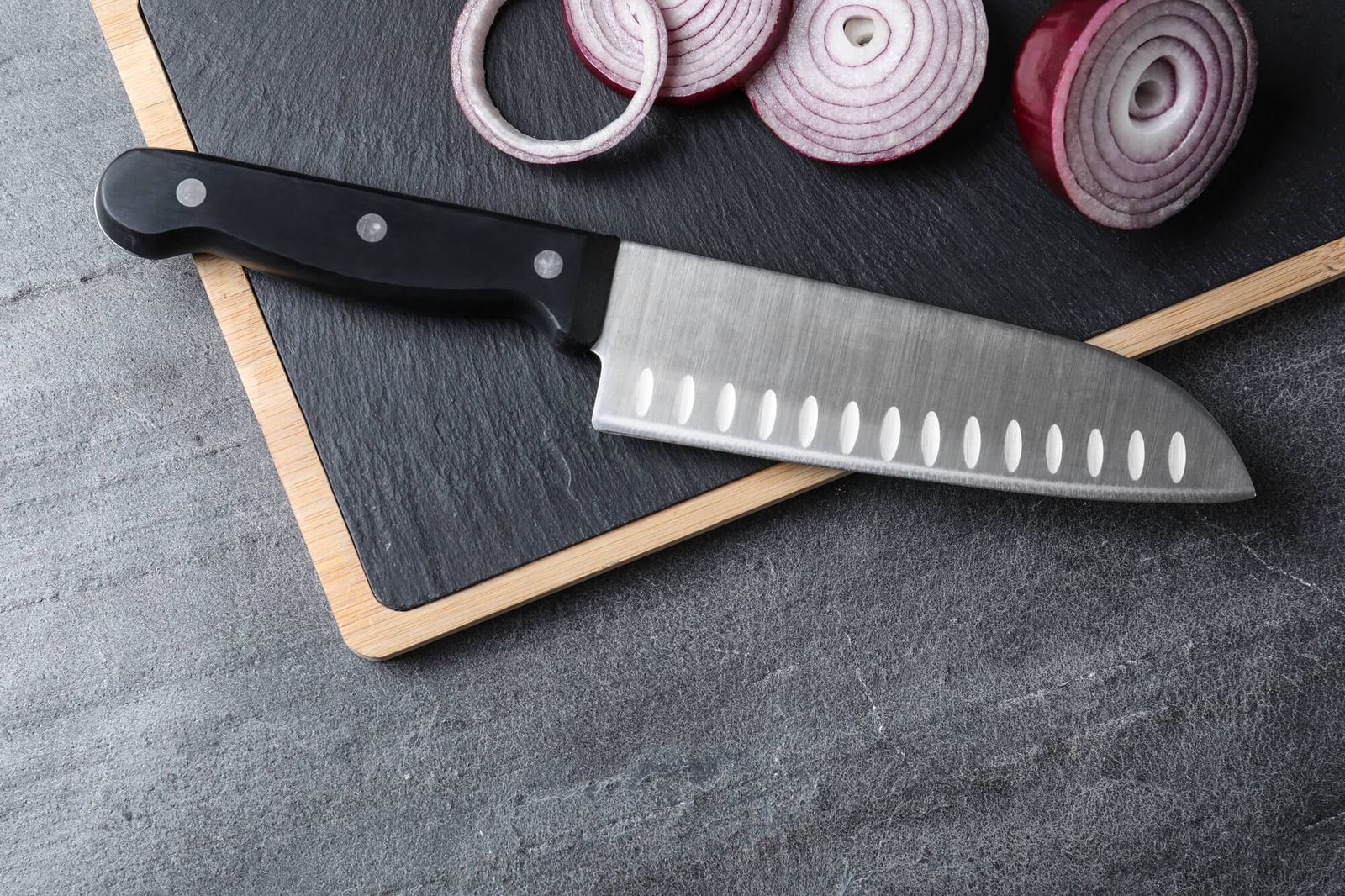The Santoku knife, an extraordinary piece of Japanese craftsmanship, has seen a surge in popularity across the globe. With its unique design and features, it offers a stunning blend of precision and versatility in the culinary realm.
In This Article:
- History of the Santoku Knife
- Design Features of the Santoku Knife
- Benefits of Using a Santoku Knife
- Santoku vs. Western Chef's Knife
- Frequently Asked Questions
History of the Santoku Knife
Originating from the Land of the Rising Sun, the Santoku knife made its debut in the 1940s. Designed as a versatile and more user-friendly alternative to the traditional vegetable cleaver, it quickly became a staple in Japanese households.
The name "Santoku" is derived from the Japanese term "三徳," which translates to "three virtues." This nomenclature is a testament to the knife's multifaceted capabilities, excelling in slicing, dicing, and mincing.
Over the years, its popularity has transcended borders, making it a favorite among chefs and culinary enthusiasts worldwide.
Design Features of the Santoku Knife
Blade:
The blade of a Santoku knife is distinctive, typically ranging between 13 and 20 cm in length. Unlike many Western knives, the Santoku boasts a flat edge, culminating in a sheepsfoot blade design.
This blade curves at a 60-degree angle towards the tip, a design choice that prioritizes safety and precision. The flat edge ensures that the entire length of the blade can make contact with the cutting board, resulting in uniform and consistent cuts.
Granton Edge:
A unique feature present in many Santoku knives is the Granton edge. Characterized by a series of scalloped divots or dimples along the side of the blade, this design serves a functional purpose. These dimples create pockets of air, reducing friction during the cutting process and preventing food, especially sticky or wet ingredients, from adhering to the blade. This ensures smoother, cleaner cuts and enhances the overall efficiency of the knife.
Bevel:
The bevel of a knife refers to the shape of its edge. Traditional Japanese Santoku knives are often crafted with a single bevel, meaning only one side of the blade is sharpened while the other remains flat. This design allows for incredibly sharp edges, perfect for precise cuts.
However, in recent years, double bevel Santoku knives have gained popularity. These knives are sharpened on both sides, making them more versatile and suitable for a wider range of cutting techniques. The choice between single and double bevel often boils down to personal preference and the specific tasks the chef intends to undertake.
Benefits of Using a Santoku Knife
- Balanced Weight Distribution: The Santoku knife ensures that the weight is evenly distributed, making it feel like a natural extension of the chef's hand.
- Razor-Sharp Edge: Meticulously crafted for fine and delicate slicing, it's especially adept at handling ingredients like fish and vegetables without causing damage.
- Lightweight Design: Unlike bulkier counterparts, the Santoku knife is designed for agility, making it easy to maneuver.
- Shorter Blade Length: The compact blade enhances precision, making it a favorite for chefs who prioritize control and accuracy in their cuts.
Santoku vs. Western Chef's Knife
Origins & Design:
- Santoku Knife: Originating from Japan, it's typically lighter, shorter, and thinner. Designed for precision and delicate cuts.
- Western Chef's Knife: Broader and slightly curved blade, designed for a rocking motion. Ideal for tasks like mincing herbs or chopping larger ingredients.
Edge & Cutting Motion:
- Santoku Knife: Features a straight edge, perfect for achieving clean slices. Especially suitable for crafting thin vegetable slices or sushi rolls.
- Western Chef's Knife: The curved blade is designed for a rocking motion, making it versatile for a range of kitchen tasks, including cutting through thick cuts of meat.
Versatility:
- Santoku Knife: Excels in precision tasks and is tailored for specific needs of Japanese cuisine.
- Western Chef's Knife: Offers versatility for a broader range of kitchen duties, from mincing to chopping.
Frequently Asked Questions
What is a Santoku knife designed for?
A Santoku knife is crafted for slicing, dicing, and mincing, establishing itself as a versatile instrument for diverse culinary tasks.
What is a Santoku style knife?
A Santoku style knife is a Japanese culinary knife characterized by its flat edge and sheepsfoot blade.
Why do Santoku knives have dimples?
The dimples, known as the Granton edge, reduce friction and prevent food from sticking to the blade, ensuring smoother cuts.
Why do Santoku knives have grooves?
The grooves serve the same purpose as the dimples, reducing friction and preventing food from sticking to the blade.
Further Reading
- Chef's Knife & Santoku Comparison: Differences & Strengths: Read a comprehensive analysis of the Chef's Knife and Santoku, highlighting their unique design elements and strengths in the culinary world.
- Interested in finding the top Santoku knife for your kitchen? Dive into our comprehensive article on the leading Santoku knives available.
- Hone your knife skills by diving into the article "How to Use a Santoku - Knife Skills 101" presented by Knifewear.



